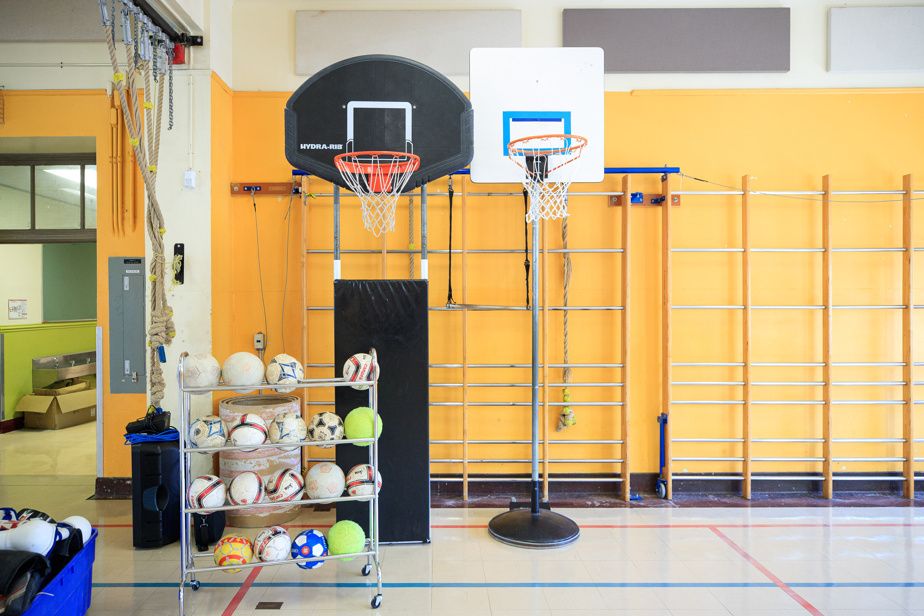The scene takes place in a volleyball tournament. During match stops, some teenage athletes pull their shorts down, appearing to want to lengthen them.
When we describe this scene to Sylvie Béliveau, director of gender equity in sport at Égale Action, it is the coach in her who reacts.
“By the time you put your equipment back, you’re not paying attention to your sport. The time you put your hair back is time spent elsewhere,” says the woman who led the Canadian soccer team at the Women’s World Cup in 1995. “It speaks to a certain discomfort,” adds -She.
Professional athletes have stood up in recent years to denounce the uniforms imposed by their federations. In 2021, for example, players on the Norwegian beach handball team were punished for refusing to play in bikinis. They managed to change the regulations, which nevertheless stipulate that the players’ shorts must be “short and tight”, while those of the men must not be “too loose”.
-

PHOTO ARCHIVED THE NEW YORK TIMES, PROVIDED BY THE NORWEGIAN HANDBALL FEDERATION
In 2021, players on the Norwegian beach handball team were punished for refusing to play in bikinis.
-

PHOTO ARCHIVED THE NEW YORK TIMES, PROVIDED BY THE NORWEGIAN HANDBALL FEDERATION
Norway’s 2019 men’s and women’s beach handball teams
1/2
Beyond the demands of athletes who make the headlines sporadically, we must focus on sportswomen who practice their sport as amateurs, observes Mme Beliveau. “If clothing makes a difference, you have to worry about it,” she says.
Professor in the physical education department at Laval University, Guylaine Demers explains that there are decisions that are made without bad intentions, but without thinking too much about them either.
Clubs will have white uniforms from top to bottom. When you’re coaching teenage girls who are starting to menstruate, white shorts are a nightmare. There are some who will prefer not to play.
Guylaine Demers, professor in the physical education department at Laval University
This is without counting on so-called “unisex” uniforms. “Unisex means “guy”. We have female athletes who wear camisoles, for example in basketball: if you have a little chest, forget it, it’s completely tight. Shorts don’t fit girls’ hips. It’s horrible,” continues the professor from Laval University.
However, uniforms are “not trivial” in sport, where we expose ourselves to the public. “When you start to have breasts, hips, you start to menstruate, your body image is not at its peak,” recalls Mme Demers.
Sometimes free, sometimes not
At Victoriaville CEGEP, the shorts worn by the women’s rugby team will change next season.
“The girls said: “It’s too short”. We are going to make the shorts longer this year, they will be more comfortable,” says Caroline Charland, student life advisor at this CEGEP.

PHOTO PROVIDED BY CÉGEP DE VICTORIAVILLE
The shorts worn by the Victoriaville CEGEP women’s rugby team (in purple), considered too short by the players, will change next season.
In one of her first jobs, “a long time ago”, she had the equipment changed cheerleading so that young high school girls do not have to wear short sweaters.
“I didn’t think it was appropriate to ask girls of that age to show their stomachs,” she says.
Who decides for young women who play organized sports at school?
“Often, it starts from the international federation, then national, then provincial, which will say: here are the parameters of the uniform,” says Stéphane Boudreau, deputy general director of the Quebec Student Sports Network (RSEQ). He adds that his organization has “absolutely nothing to do with it”.
In the case of volleyball, a sport increasingly popular among high school students, it turns out that the rules are flexible.
“Our clientele is a lot of young people aged 14-18, we don’t impose anything,” says Guillaume Proulx Goulet, general director of Volleyball Québec. In beach volleyball, the bikini is not obligatory.
Guillaume Proulx Goulet cites the example of the Norwegian players and says that when he took office, he wanted to ensure that such a situation did not arise.
He nevertheless observes that at the last Quebec Games, young people aged 15 or 16 wore a bikini to play.
“We could prevent them from wearing it, but they are free to wear what they want,” says Guillaume Proulx Goulet.
“We have to listen to them”
Now at the head of the Federation of Physical Educators and Teachers of Quebec, Christian Leclair was also responsible for sports teams in a secondary school.
Shorts were the standard in his teams’ uniforms, he said, but he has seen fashion change over the years in some sports.
At some point, the fashion came towards bib shorts. Was it the coach who demanded [le cuissard], or fashion? In school tournaments, they all wore bib shorts. In beach volleyball, there are some who wear bikinis. It’s criticized, not all girls like it.
Christian Leclair, general director of the Federation of Physical Educators and Teachers of Quebec
As a physical education teacher, does he see any reason why we have to wear tight clothing for certain sports?
“The only element that we could mention is the freedom of movement, the lightness of the fabric,” says Mr. Leclair. A pair of mid-thigh shorts, like the kind joggers wear, would do just fine, he adds.
Regardless of the fashions, we must give young people the choice and distinguish between international athletes and teenage girls, who are more vulnerable, also says Sylvie Béliveau.
“I think that the vigilance of those in charge is to ensure that we do not move towards a hypersexualization of women, because that is the danger that awaits us. Most of the time, teenage girls will tell us upfront, when they are not comfortable practicing their sport when it is too tight, or it exposes them too much,” says M.me Beliveau.
“But we have to listen to them,” she concludes.
